Category: jterm14
You are viewing all posts from this category, beginning with the most recent.
reflections on january 2014
I left home on December 27 2013. When I left I had 3 bags packed. One for our trip to Mazatlan to celebrate the new year with our friends the Vermace’s. One for my January term class on the west coast, and finally a bag full of ski gear for the rest and relaxation trip to Breckenridge. Since leaving home I have travelled a bit over 10,000 miles. My means of travel has included several flights, two long train trips on Amtrak, some time in a car, and lots of time on public transportation.
In the last 35 days I’ve had more experiences than many people would have in a lifetime. I say this out of a sense of gratitude, and to remind myself how lucky I am.
- I’ve body surfed in the Pacific Ocean on the beach in front of our rented house in Mazatlan called the Sand Castle. Calling the Sand Castle a house is a bit of an understatement.
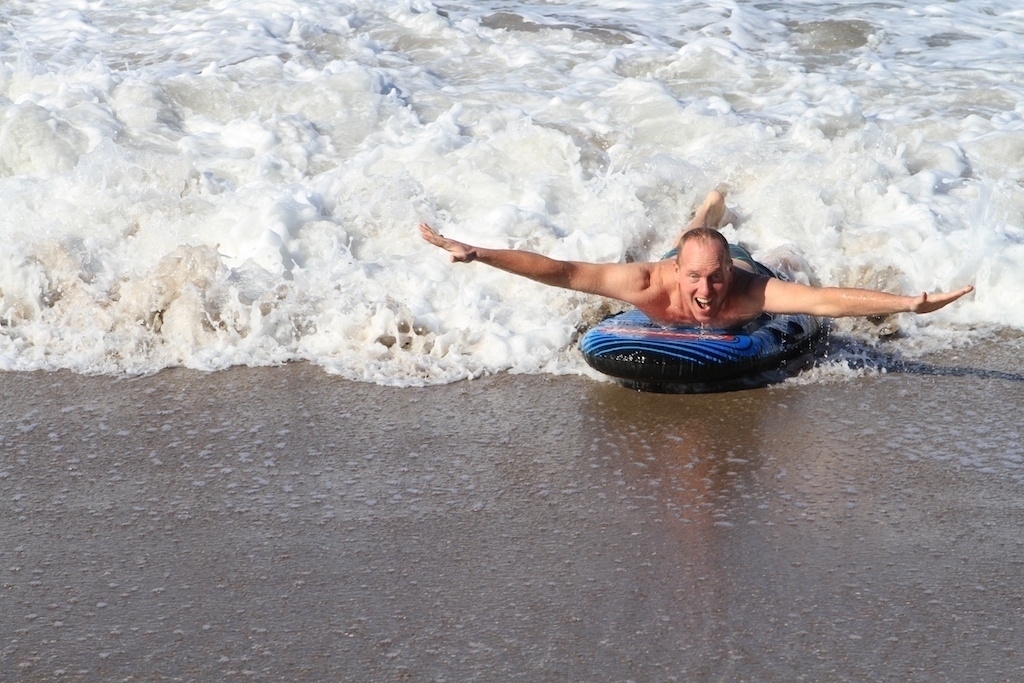

-
I’ve been deep sea fishing, and reeled in a large Dorado (Mahi Mahi), which was cleaned dockside, and prepared on the grill at the Sand Castle just hours later.
-
I’ve toasted the New Year watching fireworks over the beach from the fourth floor of the Sand Castle.
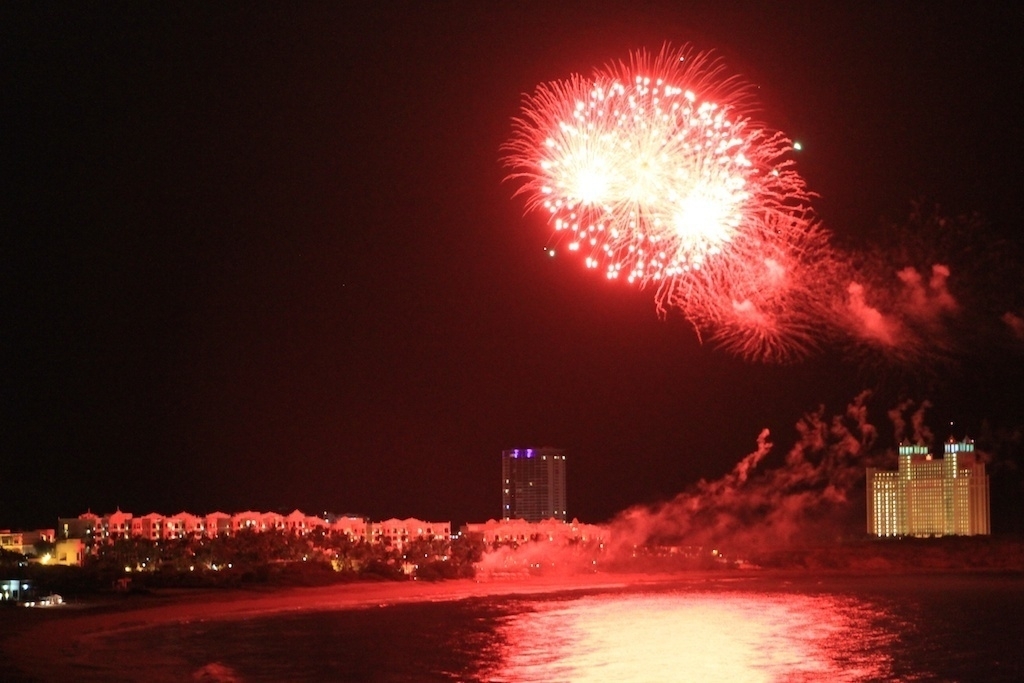
-
I’ve gotten to know a group of 11 Luther Students well, and watched as they talked with and learned from some of the most successful entrepreneurs in the country.
-
I’ve had four days in Seattle to visit Pike Place Market, eat seafood, visit Pioneer Square. During the same period we visited Amazon, Microsoft, VMWare, and Percognate.

-
The Amtrak from Seattle to San Francisco promised spectacular views and a comfortable ride. While the ride was comfortable, if I did it again, I would definitely spring for sleeper cars for the group.
-
I’ve had four days on Fisherman’s Wharf, led a bike ride across the Golden Gate Bridge, and beyond Suasalito. While in San Francisco we visited Strava, Pinterest, Moovweb, Bizo, Sqwiggle, Schwartz MSL, and Hummer Winblad.


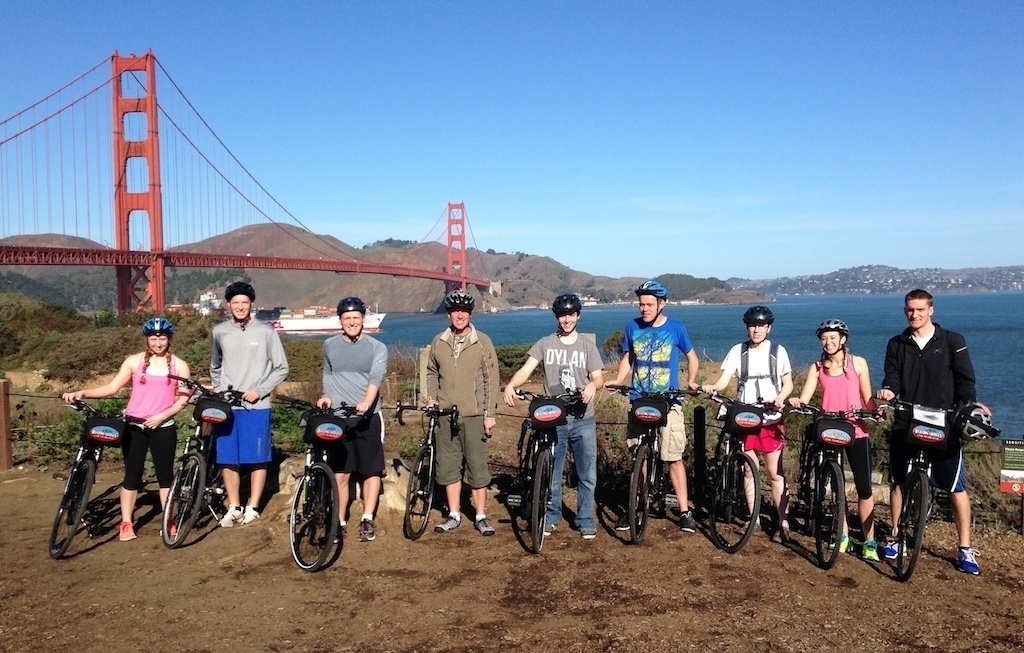


- I’ve had four days in Menlo Park, including a 32 mile bike ride up Old La Honda road and along Skyline drive. I introduced the group to turkish food at Sultana restaurant. While in Menlo Park we spent a day at Google, a morning at SportVision, and learned about patent law at Fenwick West.
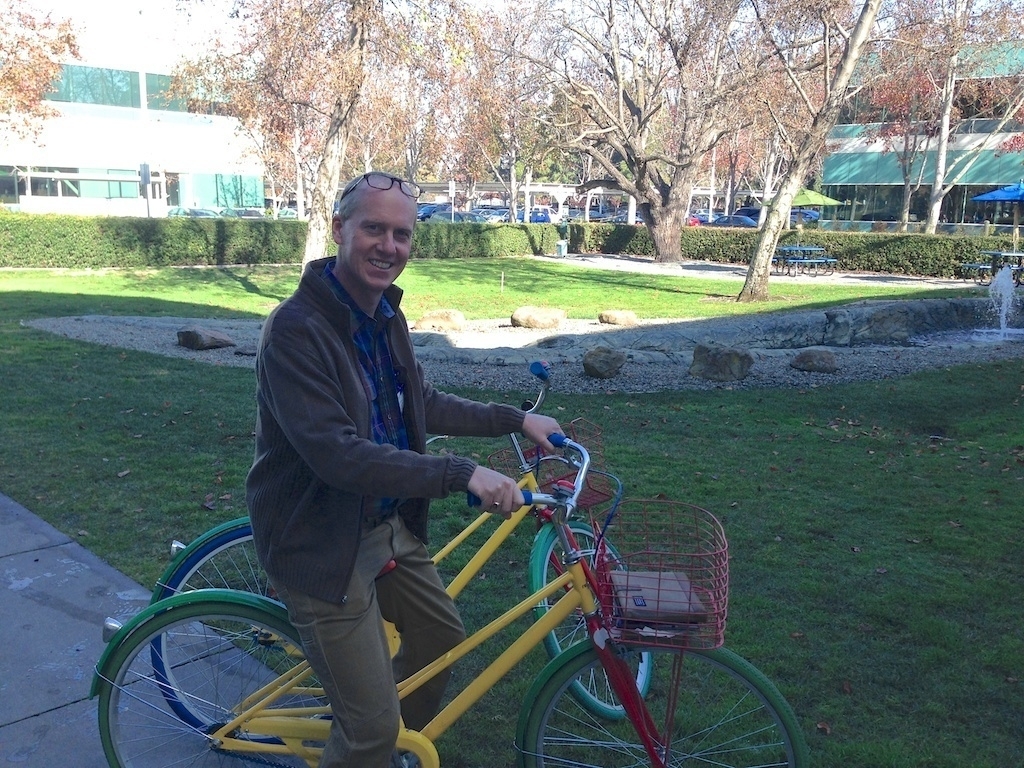
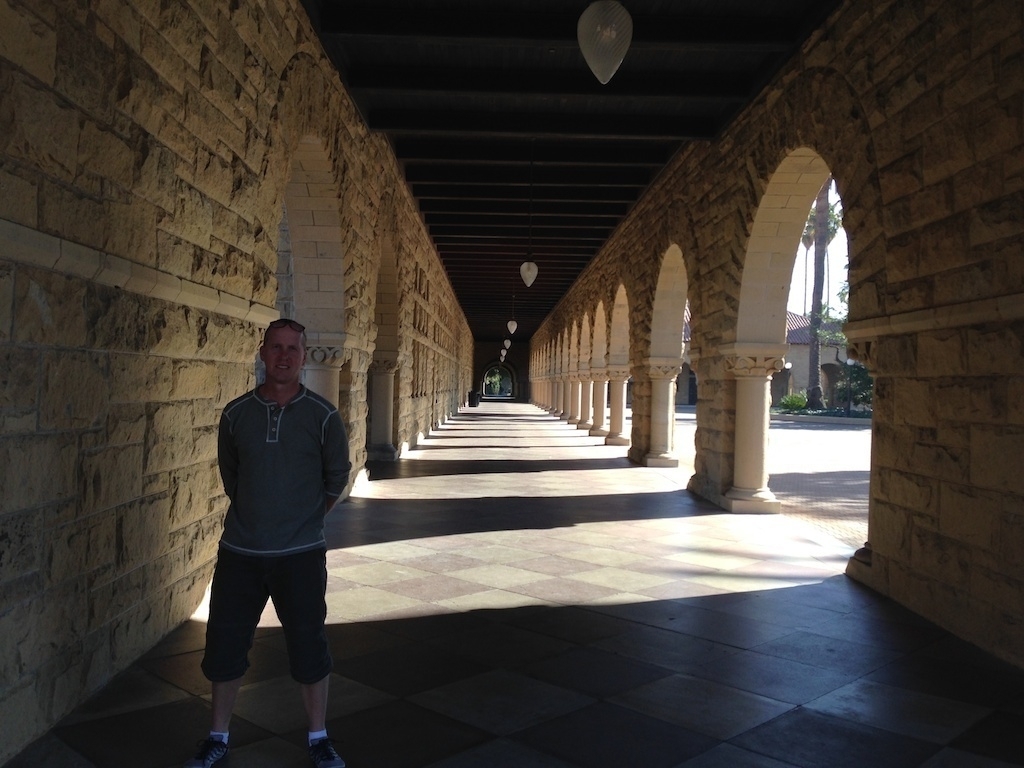
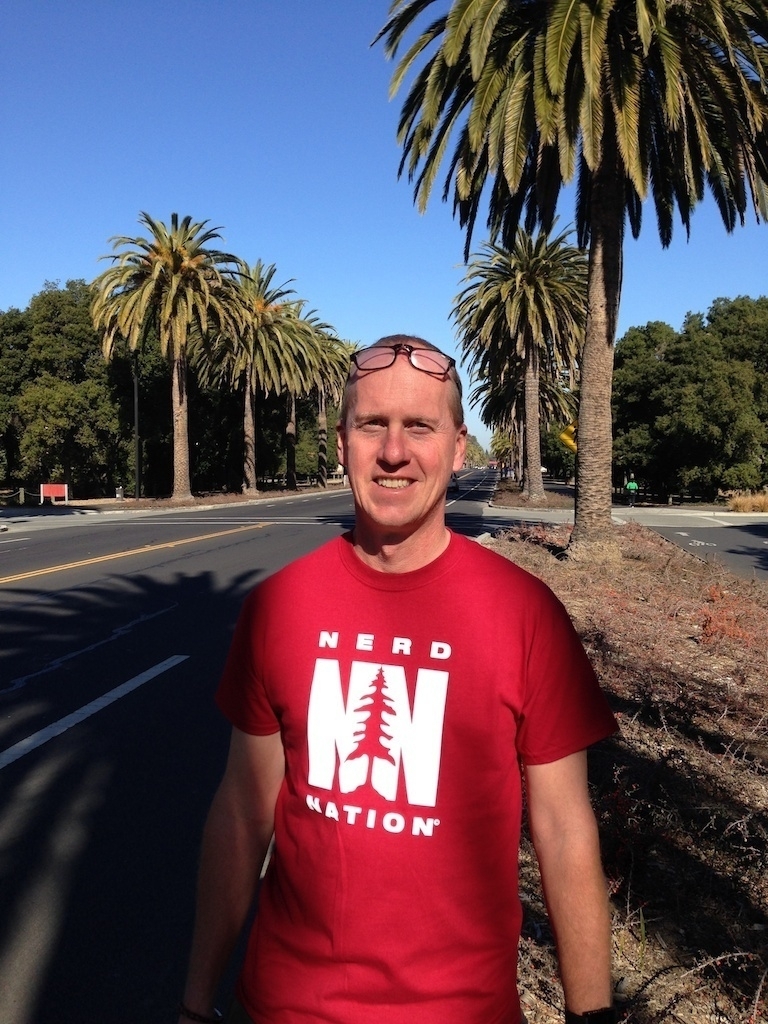


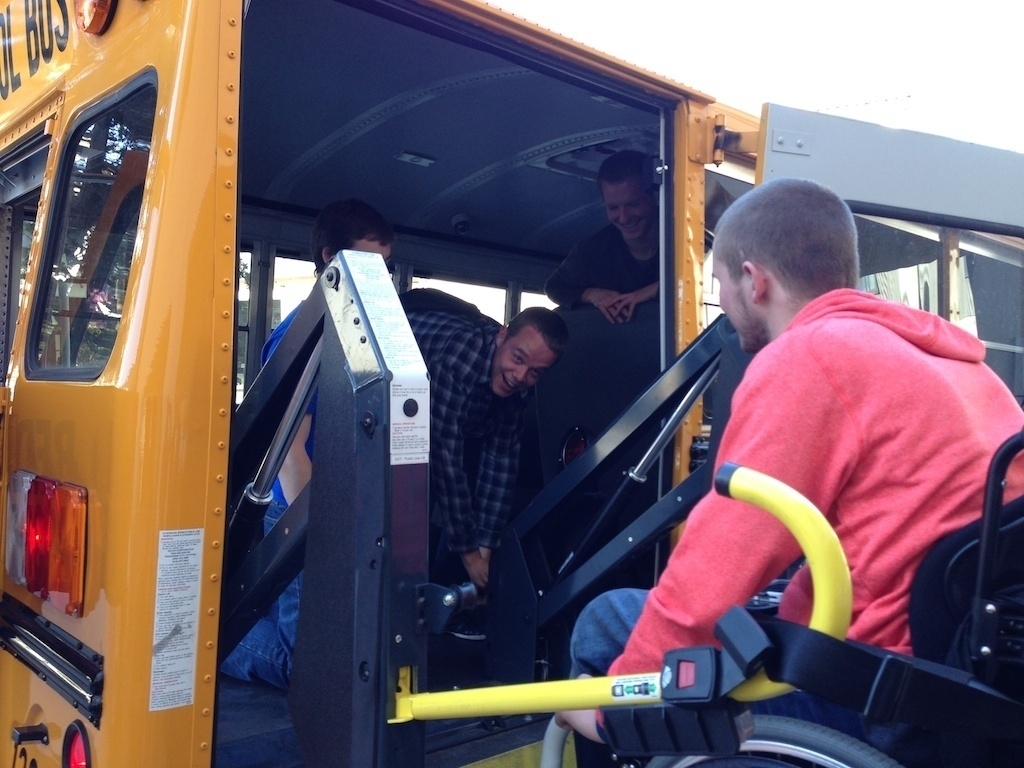
- The train ride from San Jose to Los Angeles lived up to its billing. The views were spectacular, and we got to see an amazing sunset over the Pacific.
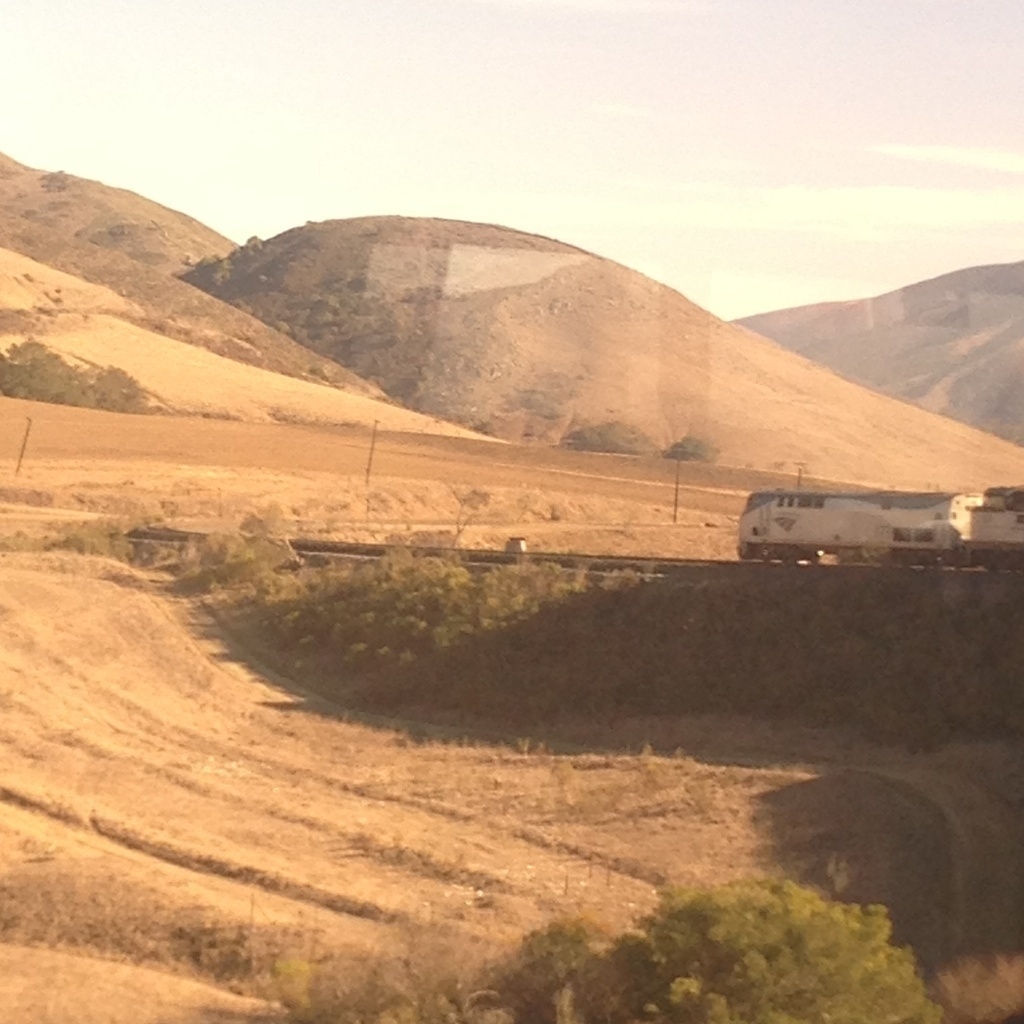
-
To cap off our trip we stayed in a house called Beethoven’s Trio in Santa Monica. Rather than eating out we were able to use the grill and the kitchen and prepare our own communal meals. It was fun to watch the students cook (and clean up) and eat in a very casual setting.
-
We got to spend the weekend exploring Venice Beach and anything else in the LA area. Sunday morning I met a group of Chelsea fans at a local British pub. A fun way to get my soccer fix for the week.
-
While in Santa Monica we visited with Capsule, Coloft, and Fullscreen. At Fullscreen we were hosted by three Luther alumni two of whom took the Entrepreneurship course and did the journey three four years ago. It is so gratifying to see your students succeed.
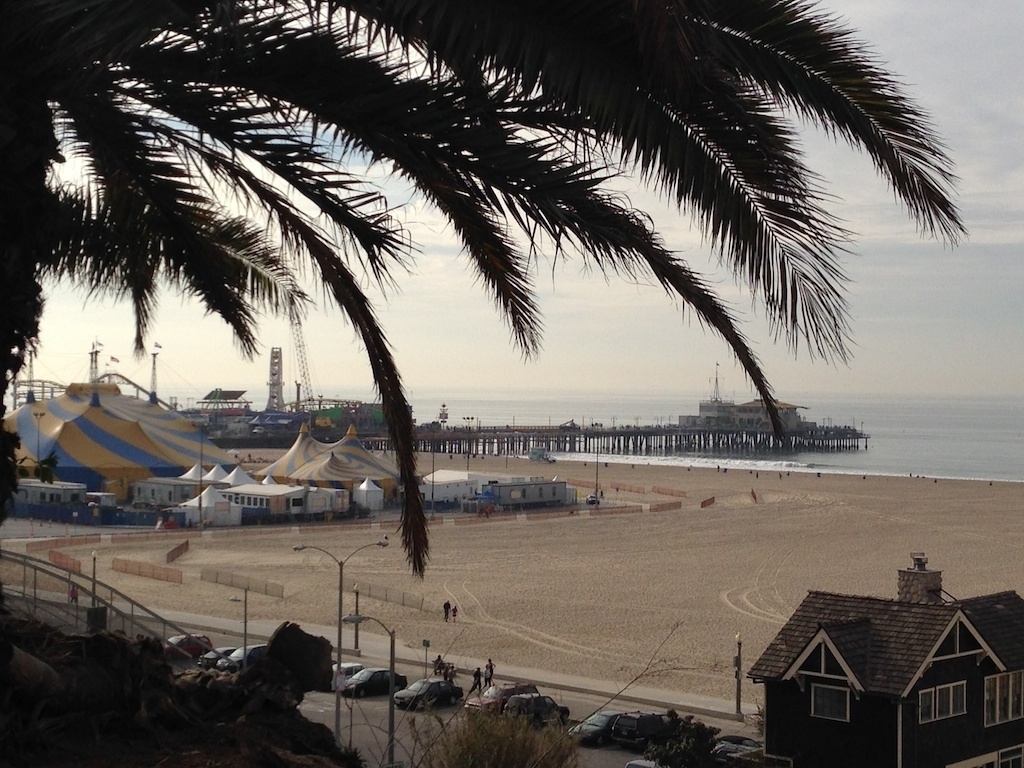
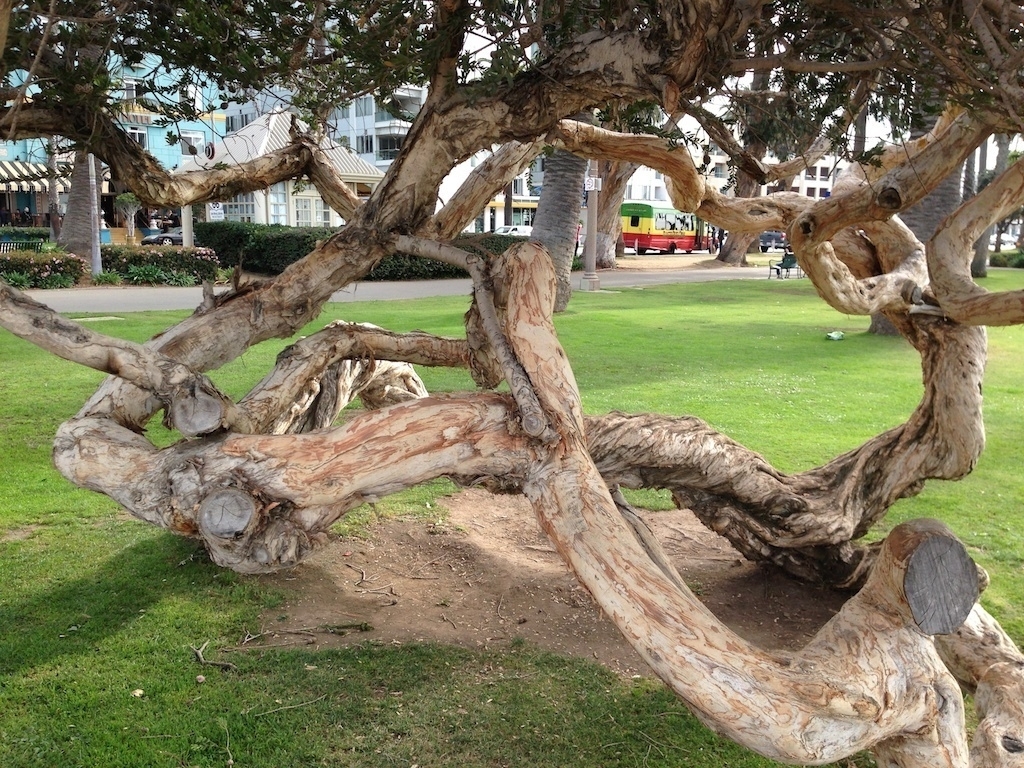
- Finally I’ve been able to spend six days “recuperating” in Breckenridge. Some might say that five days of skiing is hardly recuperating, and I would agree. However, we have had 30+ inches of fresh snow in the last three days, and the locals say this is one of the greatest storms ever. So to say that the skiing has been fantastic is a bit of an understatement.
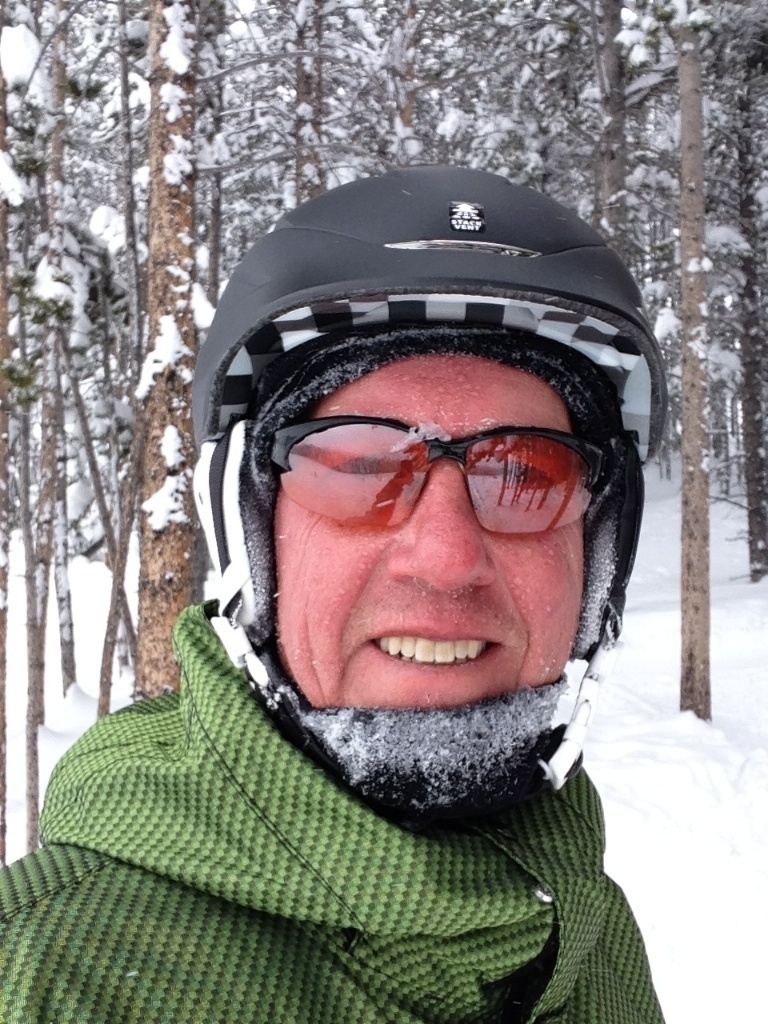
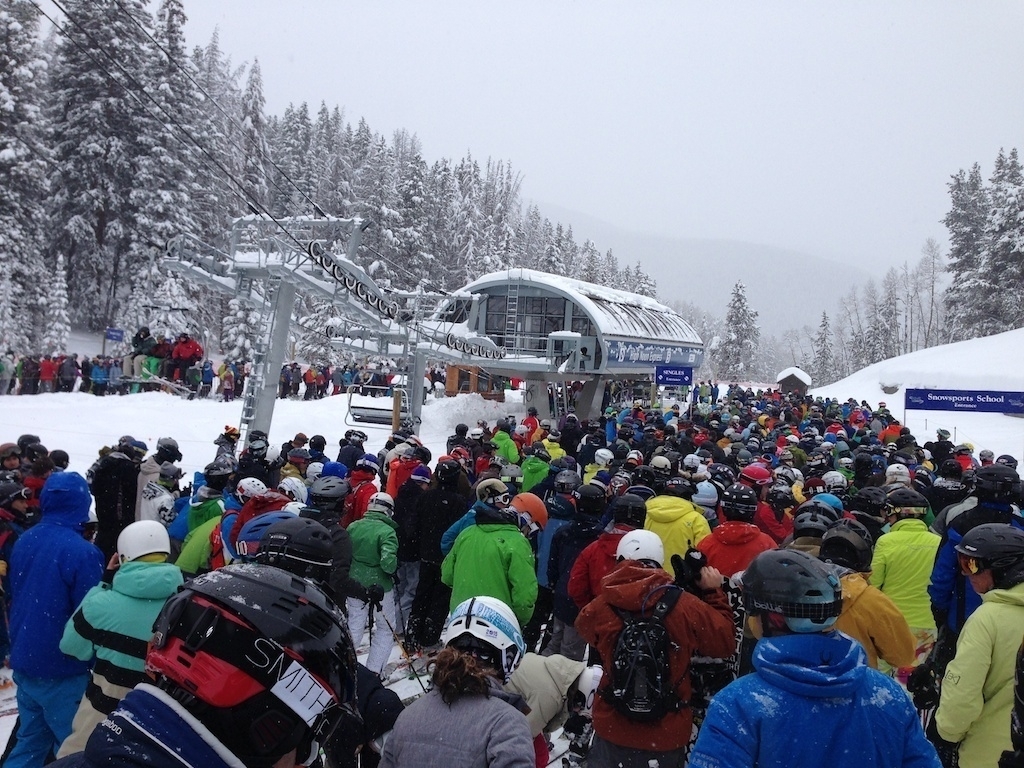
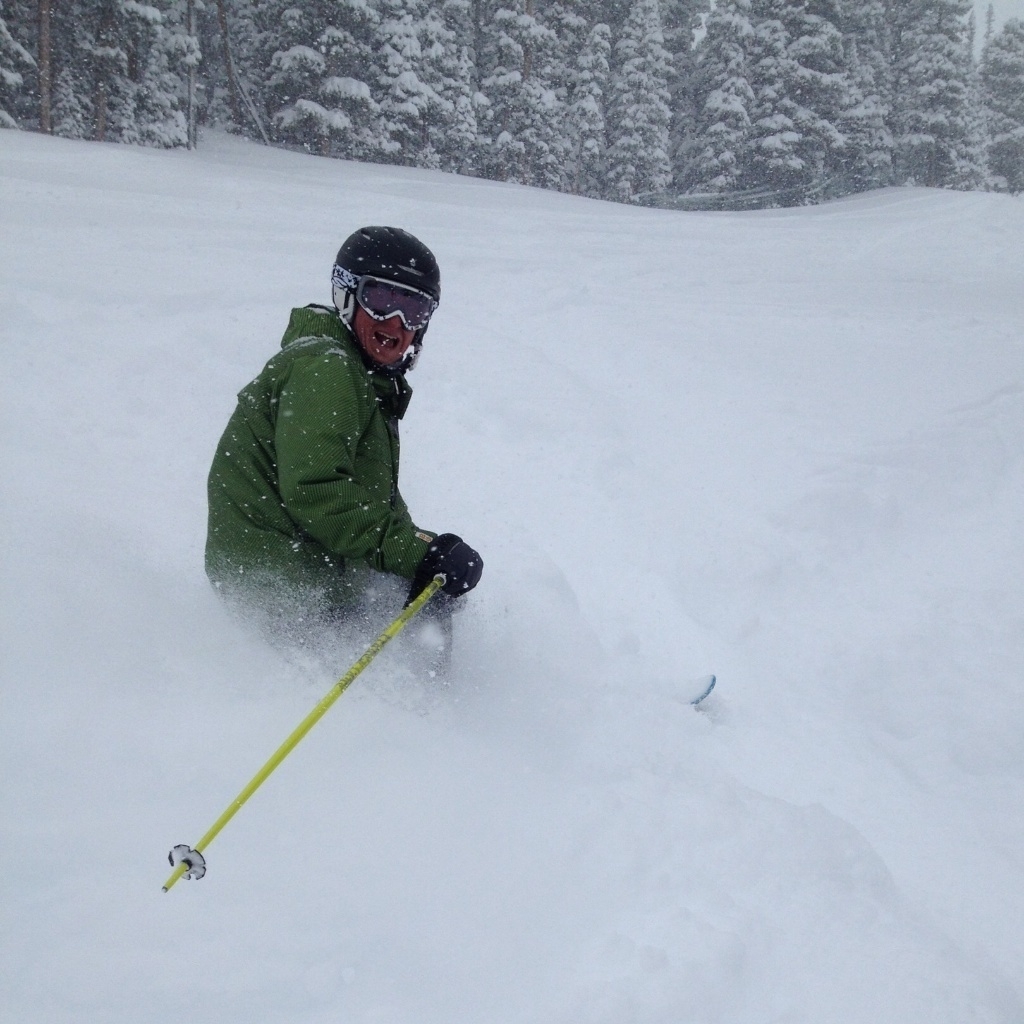
After all of this, perhaps the best thing is that I get to go home tomorrow.
final visits
My daughter Kaia is getting married next summer. This is not new news, the proposal was made an accepted last June. But planning is in full swing now, and I was kind of excited when secured a visit with Capsule, because capsule provides a service where all the guests at your wedding can download the capsule app and it will automatically upload all the photos to a special page for the wedding.
This company was founded by Cyrus, who set out to solve a simple problem, a problem we’ve been coping with on this course as well. When you travel, how do you share all your digital photos with the buddies you are traveling with. When you have a big party? When you have a wedding, bachelor party, bachelorette party? Capsule has solved this in a nice, elegant way. All the photos uploaded for a particular event, are shared with the participants in the event. Its that easy. No need to bore all of your Facebook followers with every photo from your trip. If you’re an Instagram user, its super easy to add a special hashtag to your photo and it will be automatically imported into Capsule as well as shared on Instagram.
What was incredibly interesting for me was to listen to Cyrus talk about business models, and monetizing the service. Cyrus is not a CS guy, he’s a business guy. Of course as an entrepreneur he can talk the tech talk but his home is on the business side. Here’s an example of how differently we tech people approach a problem than the business guys.
Problem: Each event needs to have a unique id, that can be given to the participants to use to join the event, and/or tag their Instagram photos.
Tech Solution: Ha, this is easy, we’ll just allow people to pick a unique identifier, lets say #TannerAndKaia No problem, this is easy just give them a text entry box, and a quick database lookup to make sure the hashtag hasn’t already been taken. No big deal, even an intern could code this up.
Business Guy Solution: Ok, just generate a random hashtag #JK286TJ. Now if the bride and the groom want to have a nice hashtag for their wedding, we can sell them that as a strategy to monetize the service.
Brilliant! We tech guys get so focused on the solution most of the time that we never stop to think about simple strategies to monetize.
Our second visit of the day was to Fullscreen. This is a Culver City company that employs three Luther Alumni! Two of which I am very proud to say are also alumni of this very course. Drew is employee number 3 of Fullscreen, and Aaron is number 15, Jacob is not far after Aaron. Fullscreen now numbers over 220 employees, and is a very fast growing new media company.
What do they do? What do you mean new media company? Well, this is where my age really starts to show. Apparently there are people in this world that spend a lot of time watching “shows” on youTube. Shows like that Marbles girl, or teenagegirl14, and thousands of others. As Aaron said, this is not your demographic Brad, this is targeted at a group of people that will probably never pay a cable bill. So Fullscreen is a Network in the sense that they aggregate all kinds of these new generation entertainers, and help them monetize their videos on youtube. Note that monetize is a euphemism for ad serving, but thats really only a small part of what Fullscreen is about. Its a great company and Drew, Aaron, and Jacob were excellent hosts. They even talked their CEO into spending about an hour with us answering questions.
Another interesting story around Fullscreen is that Drew and George (CEO of Fullscreen) met at Coloft Santa Monica. We were also lucky enough to meet with the founder of Coloft, Avesta, (@avestar). He gave the students a great no-nonsense talk on his views of entrepreneurship. The story of Drew meeting George is a great example of the synergies that can happen in a co-working facility. At the time, Drew and a partner were trying to start a little consulting company to do coding for hire. Avesta happened to be talking to George who was looking for someone with Drew’s skill set. So he introduced the two of them, and a successful company was launched.
I love this story on a couple of different levels. First, as a professor I take pride in the success and accomplishments of my students even after they leave the campus. As an alum and faculty member of a college that counts community as one of its defining characteristics, it is great to find other organizations that lift up community as a differentiator.
applied math and physics
You know those yellow lines on the football field? They are harder to draw than they look. Think for a minute about all of the different field conditions. Natural green turf, artificial turf, mud, snow, cold brown grass. Now think about all of the different colored uniforms the players wear. Now, look closely. The line never covers up any part of a player, or the ball. Notice that? The ball doesn’t have a yellow strip, the ball blocks out the yellow line. The same with players shoes. Today we got to learn about the yellow lines, the blue lines, the down and distance information, and many more cool effects that Sportvision puts on our television screens.
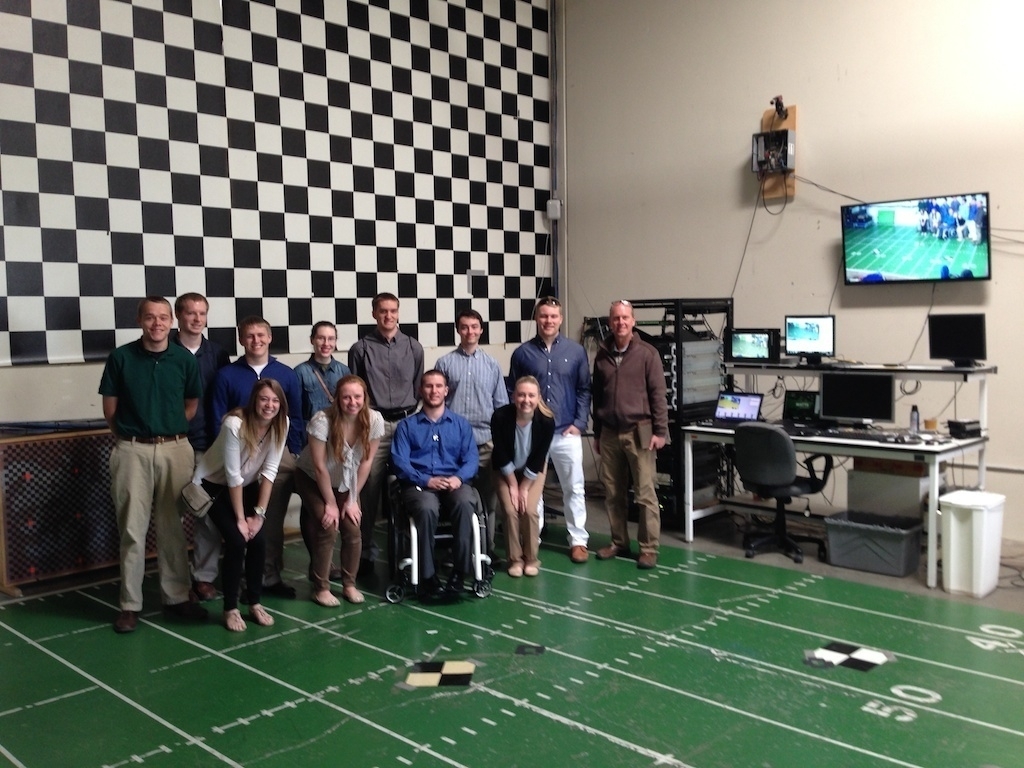
Here’s the group on the “practice Field” They were moving the blue and the yellow line for us as we stood there. You can kind of see them on the big screen on the wall. The rack of equipment behind me is what they need to bring to each game, and the computers on the desk are whats used by the operator during the game. The operator can adjust all sorts of parameters based on field conditions and uniform colors etc. In addition, in the case of a really bad snow storm, they can also project all the yard markers on top of the snow so the people at home have a better view of the field than the players.
In addition to football, Sportvision is also a big provider of on screen information for NASCAR and Major League Baseball. In the case of NASCAR they display a box of statistics right above the car as it goes around the track. For Major League Baseball, they show the ball and strike zone, and a bunch of statistics about pitch placement. They also collect statistics about every player on the diamond. They track the ball and the players using an array of cameras placed around the ballpark. Here’s where the cool math and physics comes in. Based on the flight of the ball, they compute the spin! The cameras are not good enough yet to track the laces, but with some math, they can provide a visualization of how the ball is spinning! Very cool.
Sportvision is looking at lots of sports, and looking at newer ways to get more information about every player. For example Football players may have special chips embedded in their shoulder pads someday in the future. NASCAR cars already have a special box in them that tracks all kinds of information for Sportvision, Soccer players are not likely to have any special chips as it would likely inhibit their play, unless something could be put in their shoes.
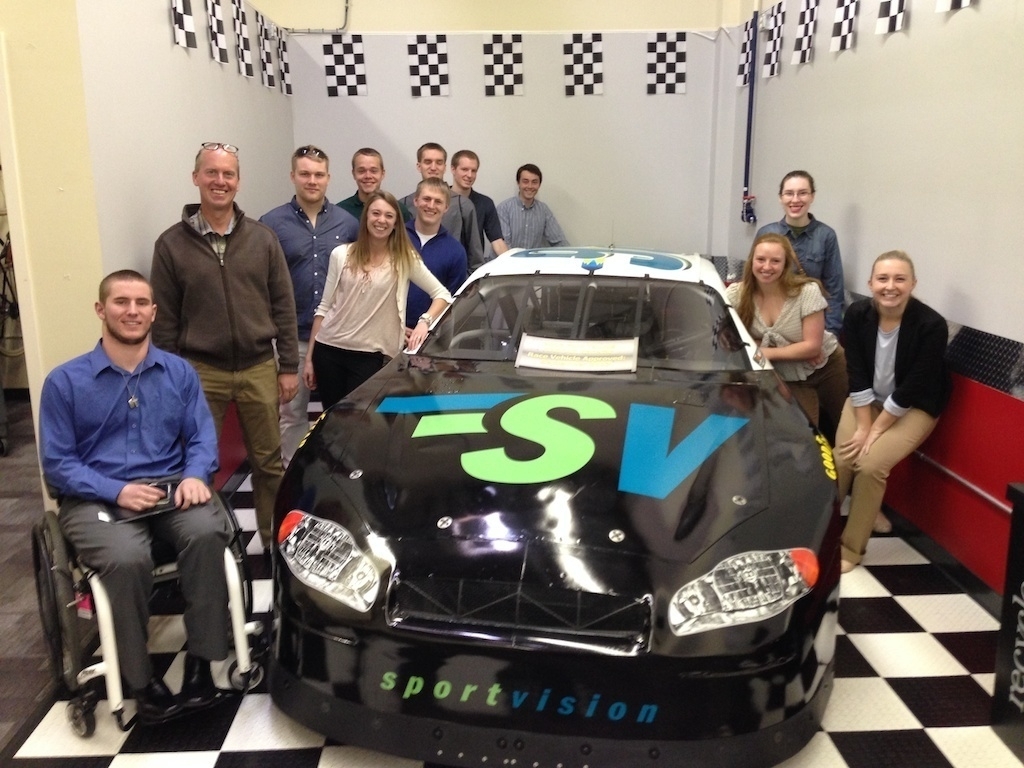
Like most of the companies we have met with Big Data is an important part of Sportvision’s future plans. Right now their main customers are the television networks, but in the future individual teams will pay for data. One interesting aspect of the big data strategy for Sportvision is that they don’t have to productize the analytics part of it. The reason is because most teams just want the data, and they consider the analytics to be a competitive advantage. This doesn’t mean that Sportvision won’t productize some analysis software, because there is a market at the college level and below where teams can’t afford to pay for their own data scientists.
transportation cogitation
This is a post I’ve been thinking about for a few days. Its a serious post, but especially after today, its surrounded in humor. Here’s the problem, to me this is funny, but if you had to live with it every day of your life, it might not be funny.
My thinking about this goes all the way back to the first day of JTerm, when we walked, and walked, and walked… through miles of parking garage to get to the light rail that would take us downtown. When we arrived downtown, most of us could easily take the escalator conveniently up to street level. Where we hunted around for the elevator for the rest of the group. It turns out the elevator is never in a location that is convenient or close to the escalators.
The next day, I led the group into a coffee shop (not a Starbucks) that our host had recommended. I popped in, looked around, and quickly realized that we couldn’t stay, not only couldn’t we stay we couldn’t all get in the coffee shop. Stairs only, no ramp.
On the positive side, the Seattle bus drivers were all extremely knowledgeable and courteous. They were able to quickly help get everyone on the bus, and locked into place for a safe ride, without one word of complaint.
The train ride from Seattle to San Francisco was 23 hours. It was uncomfortable for most of us, especially when trying to sleep, but it had to be sheer torture for someone who couldn’t get out of their chair for the entire time. Things started to get humorous when we got on the bus outside the Amtrak station. It was like the driver had no idea how to operate the wheelchair lift! Hey lets just press some of these buttons and see what happens. Never mind, the picture diagram of what to do that was posted right there.
When we needed to use the super shuttle to go from San Francisco to Menlo Park, things got a lot worse. First, the super shuttle has yet to be on time. Second, even though we ordered an accessible van, the drivers once again clearly had no idea how to make it work. Luckily by this time our own guys had figured out the general principles of a lift and were able to quickly give useful advice. The real shocker was our bus from First Student. All jokes about being on the short bus aside, it blew me away that the driver showed up with a non-functional lift. He said the battery was dead, but that didn’t stop him from randomly pressing buttons while our crew figured out how to operate the lift manually.
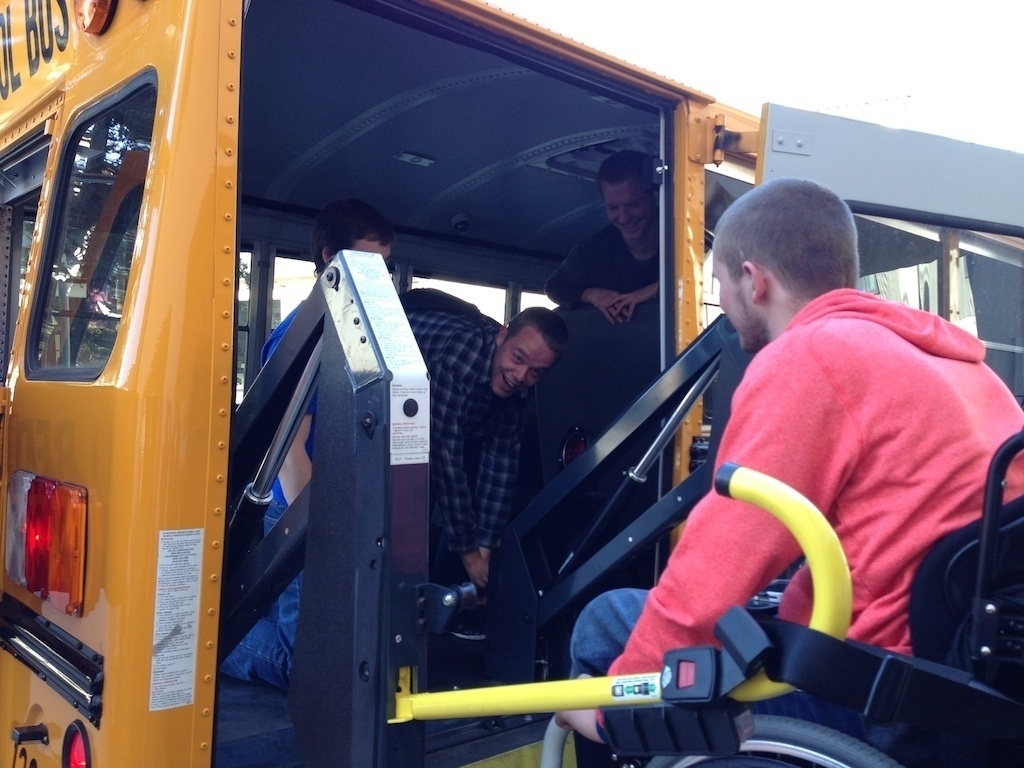
Its been an interesting process of learning and discovery on our travels, learning to look for ramps and elevators. Learning to avoid crappy rocky roads whenever possible, and generally feeling a small part of the pain of a comrade that has to put up with this stuff every day.
the social implications of a self-driving car
Today we moved south, from Fisherman’s wharf down to Menlo Park. But most of the day was spent at Google. This was certainly a day that everyone has been looking forward to for most of the trip.
My interest in Google+ was renewed by a great tech talk by Ed Chi. Who said some very nice things about me in front of my students. They probably think I paid him. We heard about supporting an organization as large as Google from Luther Alum Charles Banta, and about i18n – i(nternationalizatio)n from Luther Alum and former CS faculty member Craig Cornelius. Yes there are 18 letters between the parenthesis! We had a fabulous tour of campus, a stop in the 3D printer lab, time at the gift shop, and of course, lunch at Charlie’s Cafe.
You have probably heard about Google’s famous slides, but they also have fire poles for people that want to quickly get down a floor. And, in case you don’t want to walk between buildings they have these cool Google Bikes all over the place. Guests are encouraged not to ride the bikes, but nobody said anything about posing with one for your picture.
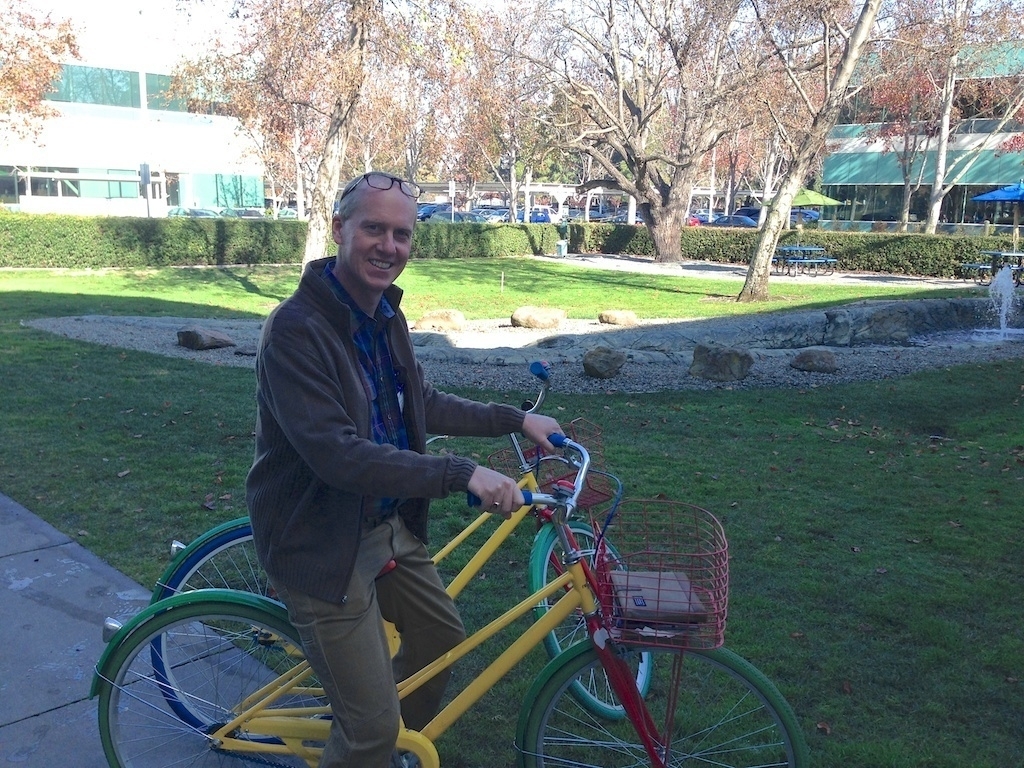
The other talk we heard was from Brian, a member of the self driving car project, who gave us a quick overview of the Google X Chauffeur Project. The technology is interesting, and I have to admit I hadn’t really thought past the cool sensors, and modeling that would be required. But, what is even more interesting are the many social implications of self driving cars.
Brian pointed out a couple of interesting facts for us to consider. Most people dedicate more space in their homes to their car or cars than they do to their own children’s living space. He also asked us to think about all the cars in the parking lot outside the office we were in. What fraction of the time are those cars in use? Are they parked 90% of the time?
What if our self driving cars could take the kids to school in the morning, and then return a while later to bring us to work? What if we could just bring up our smart phone and request a self driving car to pick us up at work and drop us off at home. We might not need such large garages. Could we turn much of our driveway space into gardens? Would this mean the end of rush hour? Probably not, but if the car was self driving, could a self driving car pick up you and a couple of friends on a logical path to work and drop you off? On the freeways would traffic flow more fluidly if the cars could talk to each other and the automated sensor systems were good enough to ensure a nice safe drive with cars spaced out 10 feet apart? A self driving car has no need to slow down and gawk if there is an accident.
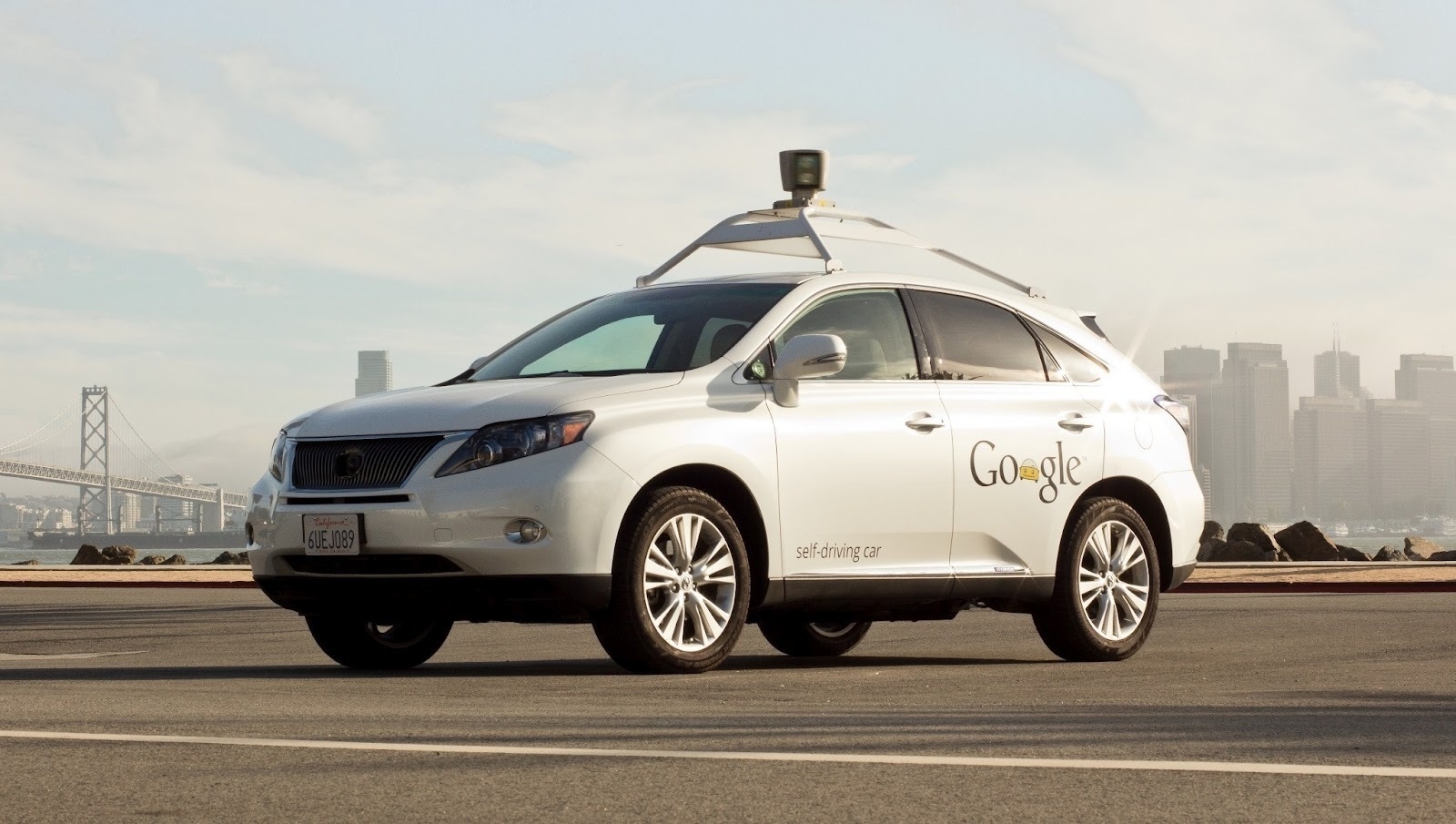
Would we collectively own fewer vehicles if our car could be called to pick us up with the touch of a button on our smart phone, or automatically scheduled to pick us up based on our daily calendar?
The big car companies will say that self driving cars are 30 years in the future. The researchers at Google feel like we are more like 5-10 years from reality. Who is better situated to make that call? The companies with the navigational, and sensor technology, with access to smart phone interfaces and calendars? In short a company like Google? Personally, I’m rooting for Google on this one, and can’t wait to buy into my first self driving car collective.
a lesson in venture capital
“Ann is on a roll, we are going to be late.” I texted to Phillip. Indeed she was. Ann Winblad was the first investor in my Company, Net Perceptions, back in 1996. She was an investor, a mentor, and a supporter of us for years. Today she was giving my students a lesson in the new economics and ecosystems of software development. I was taking notes as fast as I could to keep up with the stream of new companies and technologies that were must know things according to Ann.
After the lesson she opened up the floor to questions, and the stories began to flow. And flow, and when the students stopped asking questions she asked them questions and told them stories about their answers. We were long past the end of our scheduled time, and I noticed her long term assistant Katie, standing across the room arms folded, glaring at Ann. Heaven only knows what poor entrepreneur was downstairs sweating while she was entertaining us!
Ann repeated a number of themes we’ve heard throughout the trip. One I don’t think I’ve mentioned here but we have heard from several people: Don’t sweat your first job. or Your first job is just your first job, so don’t worry about it too much. This is such a change from when I graduated from college, and I think its a real shock for midwestern students to hear. But I think it is true. We tend to think of that fist job as a real important commitment whereas the truth is it is a chance to get experience for 2-3 years and then to help you really decide your direction.
One thing I’m not sure I agree with is Ann’s assertion that 90% of sofware will be assembled from already existing components. This may be true for some companies, but it seems to me that real, big, breakthroughs are still going to come from creating new and innovative components for other people.
This is continuing a trend/theme that we have picked up on in this trip, but that may also be a bit troubling. 1. It is so much cheaper for a software company to get off the ground these days. Amazon AWS, is just one contributor to this, Sonatype is another. 2. Automated sales and marketing software is yet another. Gone are the days when you need a big face to face sales force to sell enterprise software. 3. The result of this is that VC’s are able to make bets on software companies for a relatively small amount of money. The downside is that they may not be investing in the riskier, bigger companies that may result in really big breakthroughs.
For my own, and your convenience, here is a list of words of wisdom and interesting companies to check out:
-
You need to know Atlassian, Github, and Sonatype
-
Think about Engagement Moments These are the times that people are really paying attention to their devices and are good times to hit them up with an ad.
-
Learn Hadooop
-
Writing SQL is a requirement for everyone
-
Plumgrid
-
Hortonworks
-
MongoDB
-
Puppet and Chef
-
Nuodb
-
Baynote
changing the world, jterm 2014
The following is a republication of a post I wrote for Luther College’s “Ideas and Creations” Blog.
Changing the World: Understanding Entrepreneurship, January 2014
I have never been so glad to leave Minnesota as I was on January 6th. The temperature outside was -24 with a windchill that defied all logic. I was headed for Seattle with 11 Luther students to begin my course on “Understanding Entrepreneurship.” I really enjoy traveling with students. Their energy, their enthusiasm, their ability to eat a doughnut burger at the airport before getting on a three hour flight.
Our itinerary for the three-week course includes four days in Seattle, an overnight train ride, six days in San Francisco, four days in Silicon Valley, a continuation of the train ride to Las Angeles where we will conclude the trip. Notice the nice progression of temperatures, from -24 in Minneapolis to 48 in Seattle to 68 here in San Francisco today, to even warmer in LA.
The goals of the course are for the students to meet with people from a variety of companies, from early stage startups to very successful large companies, and everything in between. We’ll meet with technology companies, Venture Capitalists, Public Relations folks, managers, programmers, you name it. The point is for the students to hear stories. Sometimes the most interesting and valuable stories are the stories about failure. Sometimes they are about success. Almost always they are a combination of the two that demonstrate passion, persistence, and the willingness to take a risk. The students are from a variety of majors including CS, management, accounting, marketing, and communications.The mix of majors creates good discussion, and questions from a variety of perspectives.
Some of the companies we have visited you have probably heard of: Microsoft, Pinterest, Google, and Amazon. Many of the people we have talked to at those companies are veterans of smaller companies that have ended up in a large company. Some of the companies we have visited you maybe haven’t heard of, and may never hear of: Sqwiggle, Moovweb, Strava, Capsule, and Fullscreen. Some of these smaller companies are still in the “garage phase,” they are just a couple of people with a great idea and a huge amount of passion to change the world.
I have connections to many of these companies from my former life as a software entrepreneur, but what is even more exciting is that I am connected to some of these companies by former students, and other Luther Alums. What a great experience it is for the students to see Luther Alumni, here on the west coast, doing great things.
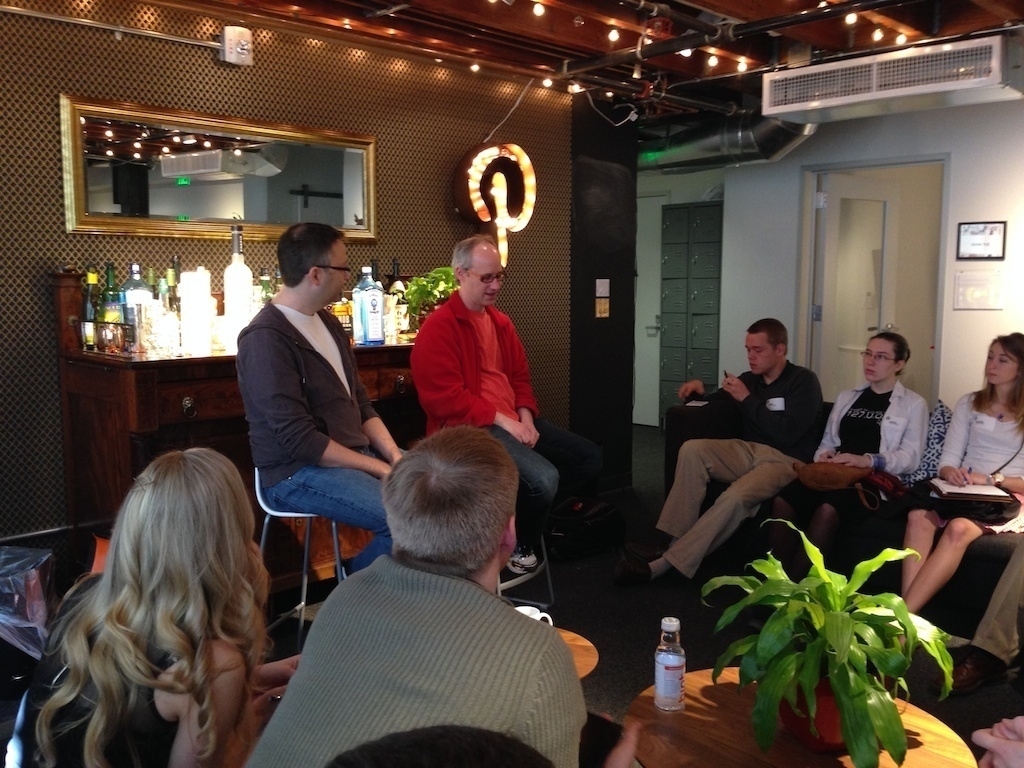
The students all have their own reasons for taking the course. Some want to see if the West coast is right for them. Some want to learn about the different job opportunities in the high tech area. Some are exploring. Some are looking for an internship for next summer at that one cool company.
It is the passion, and the willingness to take a risk on something you believe in that I really hope they take away from this course. Too often, our Lutheran midwest culture teaches us that failure is bad, something to be ashamed of. What they hear in Silicon Valley is that not trying is far worse. Everyone here has stories about failing. One, two, three or more startups that never made it. The reasons are as varied as the people. Something like 90% of newly started companies are not successful. But, people learn from their mistakes, move on, and do something new, sometimes they do something great. Always, they are trying to make a difference. If they learn nothing more than that, the course will be a success.
there is no cure for curiosity
Curiosity is the cure for boredom. There is no cure for curiosity. We began our day with a visit to PR firm, Schwartz MSL, Bryan Scanlon gave the group a great overview of the players in the PR space and how PR companies work. The tagline for their group may be something like “telling stories that matter.” I like this and it resonates well with a lot of the career advice people are sharing with the students.
In fact Bryan told a great story about his brother that really helped emphasize the message that you have to find a real world outlet for your skills and then use your skills to develop something real, something that you can tell a story about.
Bryan’s story was that at an interview for an engineering job his brother was asked to glue together two PVC pipes. A pretty practical, maybe even mundane, task for someone applying for an engineering job. However his brother took stock of the situation and said he couldn’t do it. “Why not?” asked the interviewer. “You don’t have any cleaning fluid” was the reply, “without cleaning fluid I can’t do a proper job and the joint won’t last.” He was hired.
Lunch time was great as Gage, Dylan, and I went to an Irish pub called Irish Times. The outstanding feature of this pub is that they had the Arsenal game on all of the TVs during lunch today. The arsenal were taking on Aston Villa, in a game we needed to win to retake “top of the table.” In a stroke of good luck I got to see both Arsenal goals before we had to take off for our afternoon meeting.
The afternoon meeting was at Hatch Today, a co-working space that houses many many small companies. We visited for over an hour with Eric, one of the co-founders of Sqwiggle. Eric is young, energetic, has a thousand side projects going, and is the epitome of young founders here in the area.
The software that sqwiggle produces is somewhat like Google Hangouts, but the video is only in black and white and only updates every 10 seconds, unless you are actively in a conversation with a co-worker. The idea is you can have sqwiggle on all day, without using a ton of bandwidth, and your fellow workers can see when you are in your office. If they need to have a quick conversation, they just double click on you. This allows for good interaction in a company that is totally distributed. Sqwiggle is a great example of such a company. One founder is in the UK, one in San Francisco, and one of their developers is Luther alum Cam Webb, currently in Atlanta, but soon to move to Des Moines. I think many of us were skeptical of the idea until we met with Eric, saw it in action, and learned a bit more.
Many of the themes we’ve been hearing about were repeated by Eric this afternoon, but I would like to highlight one that has not been mentioned yet. Measurement Eric showed us the company dashboard. Very cool, how many user, how many paying users, how many active users, revenue per month. All great metrics to run the business by. In addition he talked about other metrics they are collecting relative to the details of the software. This is a really important lesson. If you want to really improve something, you need to measure it. For example, bandwidth usage, number of active users in a conversation, you need to set goals, and then work on designing your software to meet those goals.
a golden bike ride
What a great day for a bike ride! We rented some bikes at Blazing Saddles, right next to the hotel. Then took off for the golden gate bridge. It was a beautiful day and no surprise, the bike paths were very crowded with all kinds of people enjoying the outdoors and the scenery.
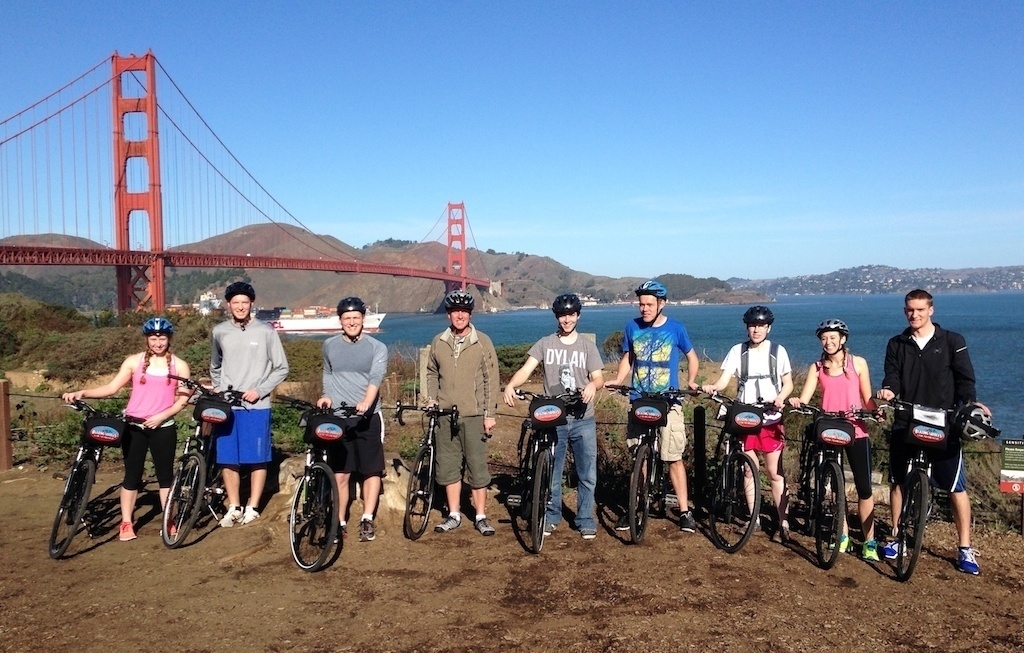
About half of the group above rode across the bridge and back. Here is me leading the pack.

The other half followed me further on into Sausalito, with the goal of making it to Muir Woods. The second half of the trek started off very nicely with a long downhill. which was quickly followed by a steep uphill. All well and good until my riders started to figure out that “what goes down must be climbed back up!” The ride flattened out through Sausalito and beyond so it was a nice easy ride for a while. But it was getting to noon, and we’d already ridden about 12 miles. I misunderstood the directions from the bike shop and thought we had about 12 more to go. So, since the guys all had tickets to Alcatraz and had to be ready to board by about 3:30 we decided to turn back short of our goal. It turns out we were much closer and could have made it to the redwoods! Bummer.
In any case, we rode just over 25 miles, and it sure felt good to be on a bike outside again!